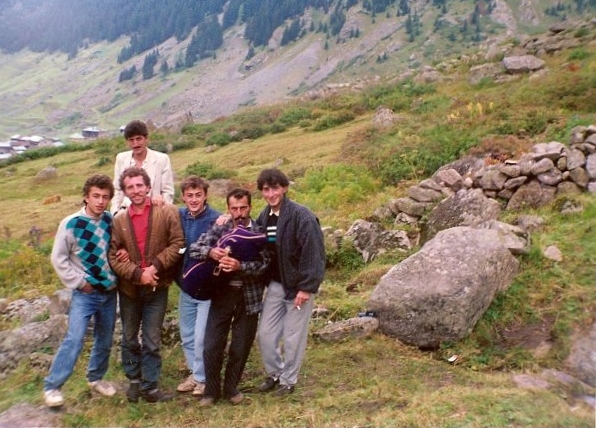
Islamicized Armenians in Turkey: A Bridge or a Threat?
Publication: Eurasia Daily Monitor Volume: 14 Issue: 46
By:

Groups whose identities do not fit the mold others have for them often become problems for both their host countries and the different communities of which they are a part. In addition, they often make particularly tempting targets for interference by outsiders. One such group is the Hemshins of Turkey, a community of approximately 150,000 people who have Armenian backgrounds, often speak Armenian, but have become Islamicized. This development puts them at odds with Christian Armenians in Armenia proper, without integrating them fully into the predominantly Muslim Turkish nation (for background on this group, see Hovann H. Simonian, ed., The Hemshin: History, Society and Identity in the Highlands of Northeast Turkey, London, 2015).
As a result, the Hemshins have yet to be included in the more capacious definition of Turkishness now being offered by Ankara to other minorities such as the Circassians, Chechens and Dagestanis living in that country (On Kavkaz, April 2). That has made them a new focus of Armenian and Russian attention, which is certain to create new problems not only for the Hemshins but also for Turkey, for Armenia and for the Russian Federation.
Last week (March 31), Saida Oganyan, an ethnographer who heads the Amshenka Union of Hemshin Armenians in Western Armenia, published a long article on the Russian nationalist news portal, Rex. Her piece suggests that this little-known group may become an ideological and even more broadly political and security challenge in the coming months, especially if tensions between Moscow and Ankara re-emerge or if Yerevan decides it needs to focus on a foreign problem to distract attention from its domestic ones (Rex, March 31).
One reason that the Hemshin issue is so complicated, she says, is that the name itself covers at least four distinct groups. She cites the conclusion of Ruben Melkonyan, a Turkologist at Yerevan State University, that these include: “Armenians who have been living in Hamshen [Armenian name for the northeastern Turkish district of Hemşin] and were Islamicized already in the 17th and 18th centuries but have preserved their identity, including language and customs,” crypto-Armenians who have preserved their identity via ethnic monogamy, Islamicized Armenians who have not retained their identity and intermarry with Muslims, and finally those who have an Armenian origin but do not consider themselves Armenians, even though many Turks and other Armenians continue to view them as such. No good data exists on the relative sizes of these communities, but the Amshenka Union head believes crypto-Armenians, many of whom were forced to convert at the end of Ottoman times in an effort to save themselves, form the majority (Rex, March 31).
Most Armenians around the world consider their identity to be rooted as much in the Christian religion as in language. But Oganyan points out “there are other communities that are united around language and not religion” and that “one must not confuse religion with ethnic origin.” That means, of course, that if the Hemshin issue becomes more important, it could present a challenge to Armenian self-definition, even as it re-energizes Armenian nationalism over the tragic issues surrounding 1915.
For Turkey, the Hemshins present an even greater problem, Oganyan suggests, because of the two ways they have found to defend their communities: On the one hand, many of them have turned to radical forms of Marxism and joined local revolutionary cells. And on the other, some have sought “to become ‘more Catholic than the pope’ ” and joined the ranks of the most radical Turkish nationalists, often to a greater degree even than the Laz, who are well-known for doing that.
Not surprisingly, the situation the Hemshins find themselves in now presents a temptation for Russia to interfere. Oganyan’s recent article is, therefore, conspicuous for two reasons. First, because of where it appeared—on a site that has often been a bellwether of Moscow’s actions. Second, for its tone—which concludes with a call to exploit international attention toward minority peoples in order to promote the Hemshin cause and ultimately seek a revision of the borders between the Republic of Turkey and the Republic of Armenia, in favor of the latter.
But what Russia and Armenia must both do immediately, she says, is to recognize and celebrate the fact that “not all Islamicized Armenians in Turkey have lost their identity” and that the assimilation they had been subject to in the past not only has slowed but in many cases has been reversed. Moscow and Yerevan can encourage this via the media. But “unfortunately,” Oganyan continues, there are not enough printed or electronic Hemshin media outlets. Furthermore, she asserts there is insufficient public attention to Hemshin issues in Russia, where some 1,500 members of this minority live in the south, or in Armenia, which has a vital interest in the survival of Armenian communities abroad. She argues that this neglect must be corrected because those who fail to do so de facto become complicit in the crimes visited upon Armenians in the past.



